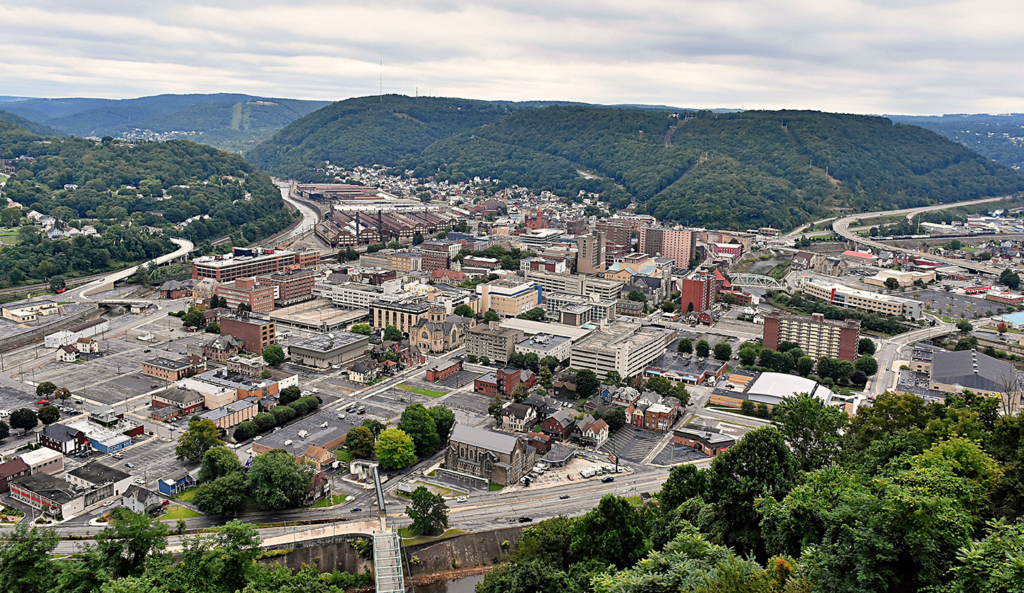Under the banner of the Interagency Working Group (IWG) on Coal and Power Plant Communities and Economic Revitalization, top officials from the White House and eleven federal agencies met today to review actions completed to date and announced further commitments to pursue near- and long-term actions to support energy communities as the nation transitions to a clean energy economy.
“We are getting more funding opportunities with more support to more energy communities, more quickly, and we’ve only just begun,” said IWG Executive Director Brian Anderson, Ph.D. “Our priorities are to drive near term investments with urgency, engage people on-the-ground directly to help simplify and demystify the funding application process, and ultimately to create a ‘one-stop shop’ clearing house for energy communities to access online resources across the federal government.”
Anderson concluded that the actions the IWG is taking today are just the first steps to help bring immediate relief to energy communities.
“For the long term, we are breaking down barriers and building up systems to better position the federal government for seamless, nimble and bi-partisan policies and programs to ensure people living and working in America’s energy communities are best positioned to compete for good jobs and thrive for generations to come,” Anderson said.
Initial Investment Highlights
The IWG prioritized 25 energy communities across the nation and identified and promoted up to $38B in funding to support revitalization of their economies for the near- and long-term.
- U.S. Department of Commerce — Among the first deliverables from the IWG, the Department of Commerce’s Economic Development Administration (EDA) announced it is allocating $300 million in American Rescue Plan funds specifically for coal communities. This investment will ensure that they have the resources to recover from the pandemic and will help create new jobs and opportunities, including through the development or expansion of a new industry sector.
- Many additional investments in energy communities — This includes more than $100 million for the U.S. Department of the Interior’s Abandoned Mine Land (AML) Reclamation Program, more than $50 million from the Appalachian Regional Commission’s Partnerships for Opportunity and Workforce and Economic Revitalization (POWER) initiative, and many more.
Stakeholder Engagement
Meeting directly with people in areas most in need of federal resources to catalyze economic revitalization, Senior IWG leaders from the White House and numerous IWG agencies, in concert with local partners, led 11 in-person or virtual events thus far, with participation by more than 2,500 people. This included state, local, and Tribal officials, labor unions, business leaders, environmental justice organizations, and community groups.
- IWG economic revitalization workshops — These working sessions focus on supporting energy communities to take advantage of the largest funding for coal communities ever set aside by the EDA, and actionable information on other funding opportunities across the federal government. Events to date focused largely on West Virginia, Pennsylvania, North Dakota, Colorado and Arizona’s Navajo and Hopi energy communities.
- IWG co-Chair McCarthy and U.S. Interior Secretary Haaland visit Pennsylvania coal communities — National Climate Advisor Gina McCarthy, who Co-Chairs the IWG, and US Interior Secretary Deb Haaland met with community leaders and toured abandoned mine lands in Pennsylvania to focus on environmental justice and reclamation solutions.
- Secretary Granholm visits several energy communities — U.S. Energy Secretary Jennifer Granholm, appointed to administer the IWG, traveled to West Virginia to meet with coal community leaders and U.S. Senator Joe Manchin. Additionally, the Secretary led a two-day listening tour and visit to New Mexico’s key energy sites with U.S. Senator Martin Heinrich (D-NM) in Albuquerque, Farmington, and the Navajo Nation.
- IWG launches website — The IWG launched a website, energycommunities.netl.doe.gov, for the public to learn more about the IWG’s activities in general, and specifically about funding opportunities and upcoming events.
“One-Stop Shop” Clearinghouse
To deliver on its commitment for a whole of government approach, the IWG is pursuing additional, near-term actions to centralize and publicize available funding opportunities, provide meaningful assistance, and deliver the federal resources necessary to create jobs and catalyze economic revitalization. Specifically, the IWG will streamline and simplify access to the federal government for energy communities in the following new ways.
- IWG website clearinghouse — As a next priority, the IWG today committed to upgrade and greatly expand the current IWG website to develop and deliver an online portal highlighting existing and proposed federal support for energy communities. The portal will gather and summarize relevant opportunities from all IWG agencies in one location and point viewers to the application. The clearinghouse is another step toward creating a “one-stop shop” for energy communities that will be a priority for delivery in 2022.
- U.S. Department of Energy — The U.S. Department of Energy just announced a pilot technical assistance program providing streamlined access to the agency’s key energy investment programs and focused on a targeted set of under-served communities including those transitioning away from coal as well as oil and gas. IWG is hosting a virtual seminar to help stakeholders understand and apply for funding.
Established by an Executive Order in President Biden’s first week in office, the IWG is pursuing a whole-of-government approach to create good-paying union jobs, spur economic revitalization, remediate environmental degradation and support energy workers in coal, oil and gas, and power plant communities across the country.

 )
or https:// means you’ve safely connected to
the .gov website. Share sensitive information only on official,
secure websites.
)
or https:// means you’ve safely connected to
the .gov website. Share sensitive information only on official,
secure websites.

